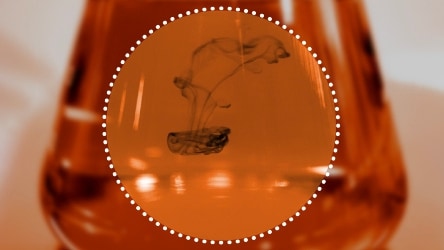Why is the absence of combustion so important?
Below is a transcript of the video:
Hello everybody, my name is Tom McGrath. I’m a scientist by training, I have a PhD in Chemistry. I’ve studied the design, development, and research into smoke-free alternatives for the last ten years. Today, I’m going to talk about combustion, and why it’s very important that we eliminate it. As Markus has explained: combustion reactions, due to the high temperatures involved, lead to the generation of smoke and ash, and to the emission of harmful and potentially harmful constituents. A combustion process and its characteristics are very well known in the fields of combustion science and fire safety. It can be defined as the oxidative reaction of a fuel that is fast enough to release heat and light usually in the form of a glow or a flame.
Everyday combustion reactions, such as burning fossil fuels, wood, candles, and the tobacco in a cigarette are seldom complete combustion processes, and incomplete combustion products are actually formed.
Most of us are very familiar with examples of flaming combustion, but in a cigarette when the tobacco is set on fire, we have a smoldering combustion process or a flameless combustion process. If we look at a cigarette and the tobacco being the fuel, the combustion reaction can be set up when the tobacco is heated at temperatures above 400 °C for an oxidative reaction to occur. So, the oxidant in this case would be the oxygen in air, and the source of the heat that raises the heat of the tobacco would be a match or an actual lighter. Once this combustion reaction sets in, the temperature at the tip of the cigarette is greater than 600 °C, and when air is drawn through the tip of a cigarette, the temperature rises above 850 °C. To put this in perspective, this is about 4 times hotter than a frying pan.
In designing a portfolio of smoke-free alternatives, it is very important that we eliminate combustion, and that we control the temperature to which a solid matrix such as tobacco, or a liquid matrix such as an e-liquid, are actually heated. With our heat control technology, we are able to raise the temperature of tobacco sufficiently to release nicotine and flavors, but also low enough that we avoid combustion.
So, what evidence do we have to support the absence of combustion in our smoke-free products?
- When air is drawn into the tobacco heating system, instead of it increasing as would be the case in a combustion process, the temperature of the tobacco decreases.
- If you were to take away the source of energy in the system, in this case turn the heater off, you see a rapid decrease in the temperature of the system.
- As there are no combustion reactions, the tobacco in the tobacco stick is not consumed to ash and to generate smoke, but actually remains intact.
- Analysis of the aerosol that’s generated from the tobacco heating system shows that it is absent of combustion-derived solid particles.
- When you don’t have air or you do not have an oxidant, you cannot have combustion. Operating the tobacco heating system in an atmosphere of nitrogen, i.e., the absence of oxygen, yields very similar results as when the experiments are run in air, showing that the tobacco heating system is independent, in fact, of the atmosphere around it.
So why is this important? Scientific studies have shown that as the temperature of the tobacco increases, the levels of harmful and potentially harmful constituents also increase. So, by eliminating combustion and reducing the temperature at with the tobacco is heated to, we will significantly reduce the overall levels of harmful and potentially harmful constituents. In the tobacco heating system aerosol, the levels of these harmful and potentially harmful constituents are on average reduced by 90-95% compared to cigarette smoke.
So, to sum up: elimination of combustion is a fundamental foundation in the heat-not-burn principle. By heating tobacco to temperatures below combustion, we are able to reduces significantly the levels of harmful and potentially harmful constituents.
I just want to take the opportunity to thank everybody for their time.


